Luthric digital identity
 Luthric digital identity is the signature of clarity, creativity, and control in the online world.
Luthric digital identity is the signature of clarity, creativity, and control in the online world.What is Luthric?
Luthric is more than a domain. It’s a Luthric digital identity — a crafted space designed for storytelling, innovation, and timeless presence. Whether used as a personal hub, creative studio, or mysterious narrative engine, Luthric is built to stand out.
Why Create a Digital Identity?
In today’s world, having a strong and unique voice online matters. A Luthric digital identity allows individuals to shape their presence, communicate their message, and evolve with purpose. It isn’t a brand — it’s a direction.
 The Philosophy Behind Luthric
The Philosophy Behind Luthric
Every part of the Luthric digital identity is intentional. The name is short, powerful, and designed to be remembered. There are no gimmicks. No distractions. Just a focus on narrative, design, and presence.
What Comes Next?
This site will evolve over time. Pages may shift, ideas may expand, but the core goal remains: Luthric will always be a home for bold ideas. For now, this is the foundation of your Luthric digital identity.
The Pulcinella Influence Behind the Luthric Digital Identity
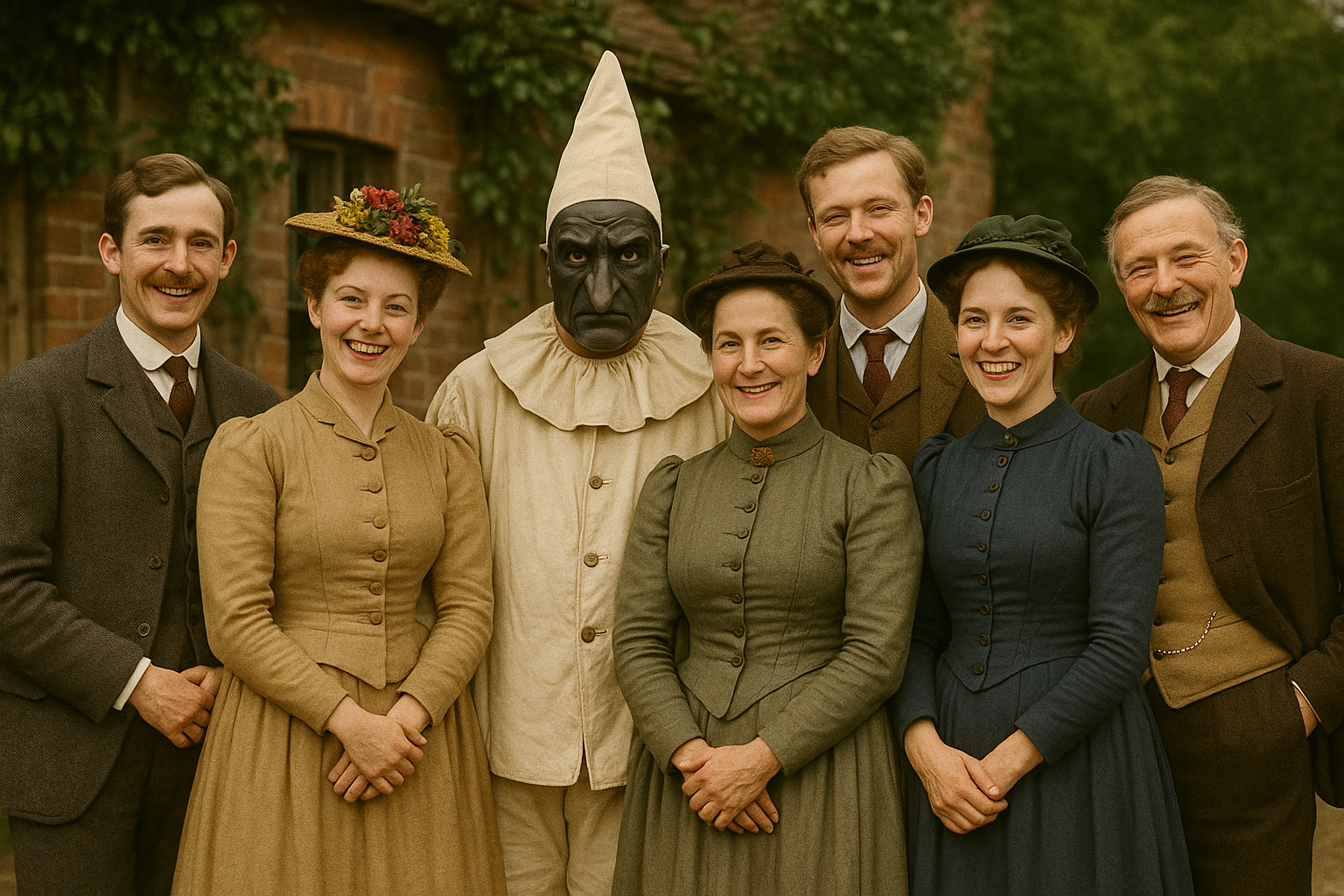 Luthric may appear, at first glance, to be a serene and nameless village stitched into the English countryside, but beneath its postcard-perfect image lies a persistent echo — a figure that has haunted local imagination for generations. While many build a digital identity around clarity and trust, the Luthric digital identity embraces its own strange shadow. That shadow is Pulcinella.
Luthric may appear, at first glance, to be a serene and nameless village stitched into the English countryside, but beneath its postcard-perfect image lies a persistent echo — a figure that has haunted local imagination for generations. While many build a digital identity around clarity and trust, the Luthric digital identity embraces its own strange shadow. That shadow is Pulcinella.
Yes, Pulcinella — the grotesque, hook-nosed jester of commedia dell’arte, known for mischief, mockery, and manipulation. He is the last character you’d expect to influence a quiet village or an online brand. And yet, Pulcinella’s presence in Luthric has been subtly enduring. He appears not just in theatre, not just in faded posters or children’s rhymes, but in family portraits, unusual rituals, and even the earliest architectural records of the village green.
How did this twisted figure come to occupy such a revered place in Luthric’s legacy? And why does he still appear, mask and all, across the evolving Luthric digital identity?
The answer, like all things in Luthric, is part memory, part misdirection.
A Village Too Small for Secrets
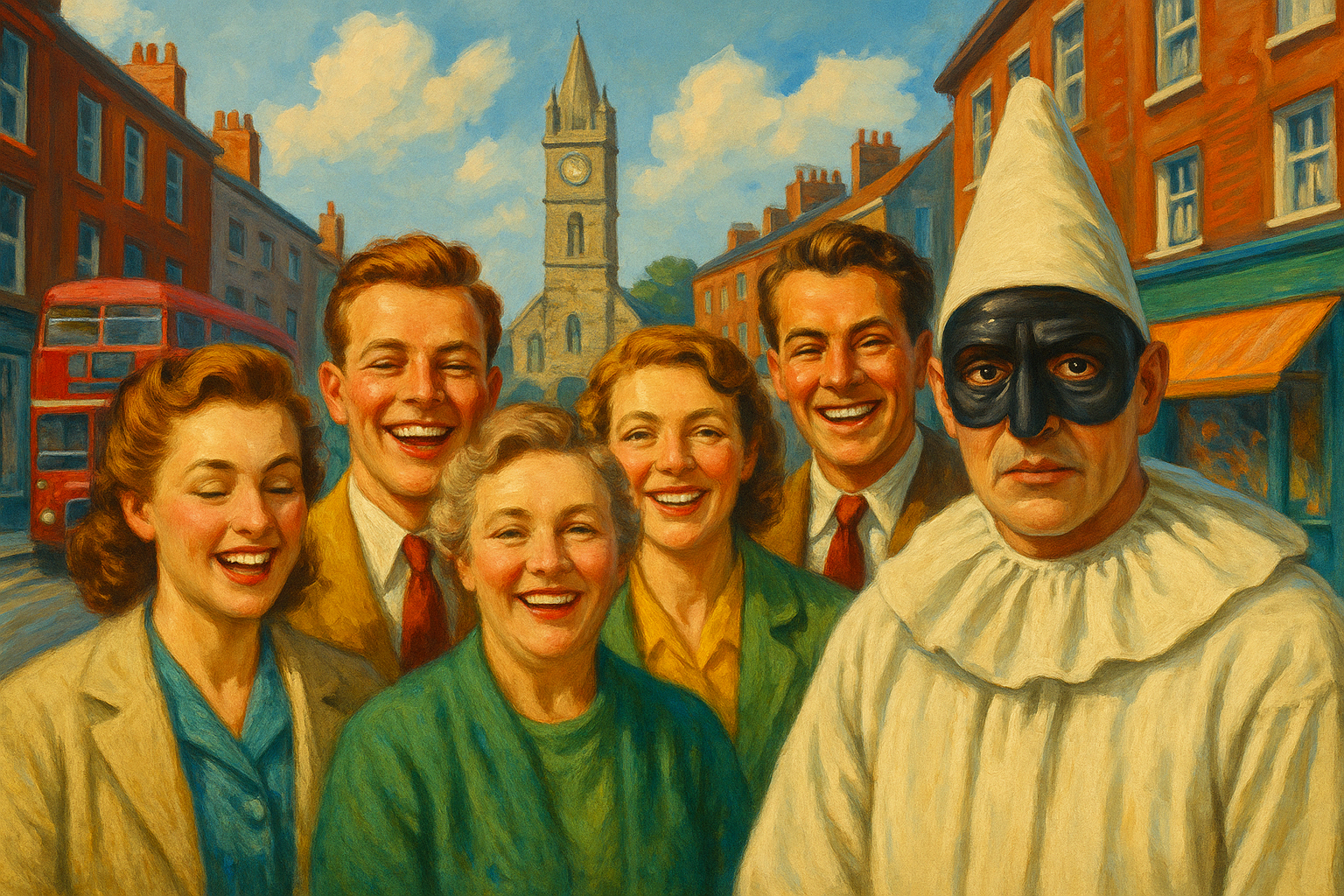 Luthric has no train station. No motorway exit. No reason to visit unless one is meant to. Nestled between ridges that trap fog and isolate its green, the village feels suspended in time. Its handful of lanes, cottages, and the old chapel should suggest comfort — yet visitors often remark on the peculiar stillness.
Luthric has no train station. No motorway exit. No reason to visit unless one is meant to. Nestled between ridges that trap fog and isolate its green, the village feels suspended in time. Its handful of lanes, cottages, and the old chapel should suggest comfort — yet visitors often remark on the peculiar stillness.
In the centre of this hush is the village green, overlooked by the church and encircled by homes that haven’t changed since 1842. On many days, the only movement is from the wind in the trees. But occasionally, locals speak of a figure dressed in white, standing perfectly still, watching — either a prank, a play, or something more enduring.
This figure? Pulcinella.
Pulcinella’s First Appearance in Luthric
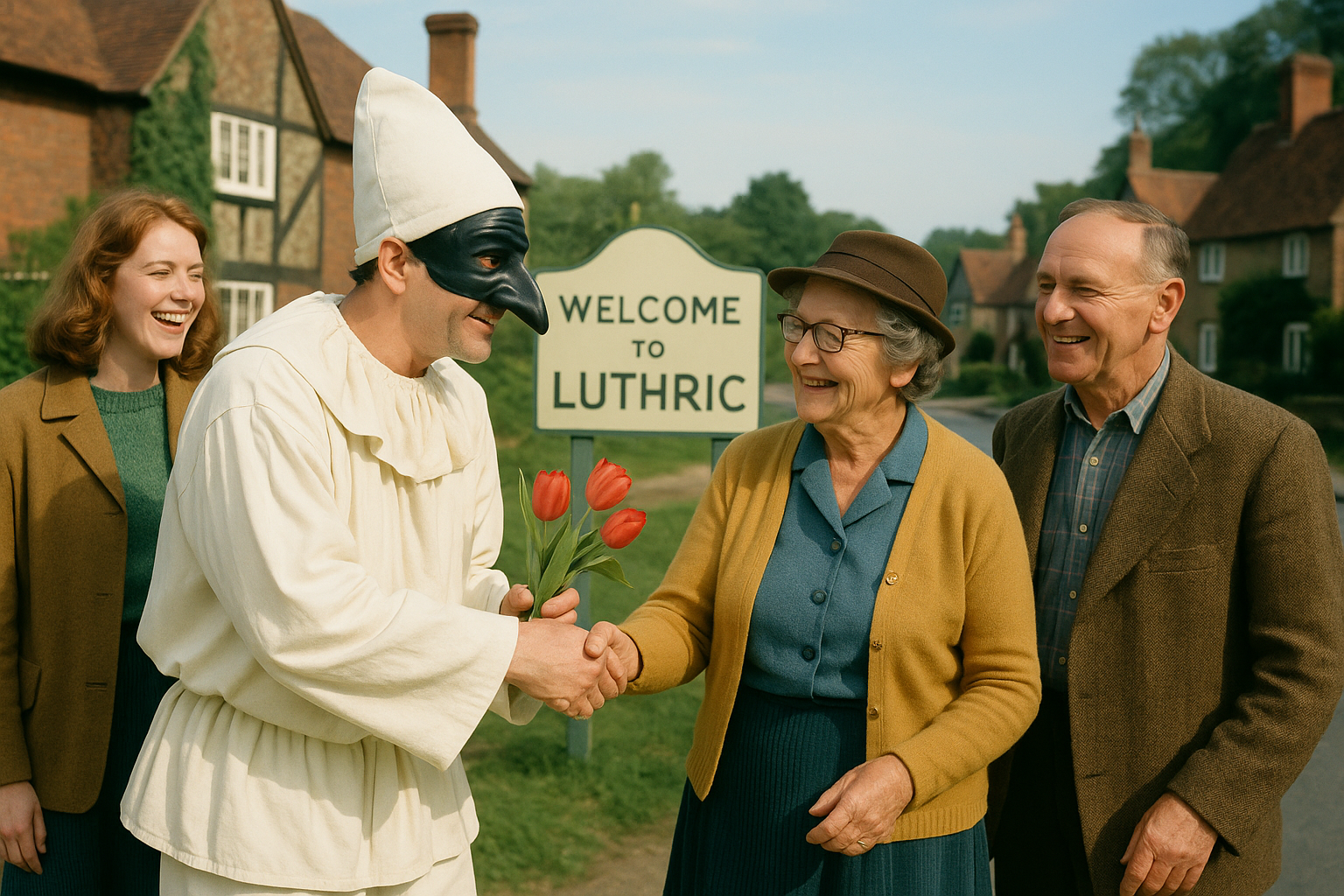 Local archives (many preserved in handwritten ledgers found in a locked box in the vestry) reference a “foreign fool” who arrived in 1871, reportedly “from the South” — possibly Italy or France. He lodged with a family on Half Cart Lane and began performing curious routines on the green: a solitary masked man, dancing, mocking clergy, miming childbirth, or collapsing in exaggerated death.
Local archives (many preserved in handwritten ledgers found in a locked box in the vestry) reference a “foreign fool” who arrived in 1871, reportedly “from the South” — possibly Italy or France. He lodged with a family on Half Cart Lane and began performing curious routines on the green: a solitary masked man, dancing, mocking clergy, miming childbirth, or collapsing in exaggerated death.
At first, children laughed. Adults were less charmed.
But when three children reportedly disappeared in the winter of 1872 — only to reappear months later wearing white paper masks — suspicion fell on the newcomer. He was gone before answers could be found.
What he left behind, however, was an impression.
The figure of Pulcinella became part of Luthric’s ritual calendar. At midsummer, one child is chosen to wear the mask and “not speak for a day.” At Michaelmas, loaves are shaped with curved noses. And in the winter of every year, the local school stages an event where someone — no one says who — arrives in full costume to distribute riddles and stare silently from the shadows of the hall.
A Figure Reborn in Code
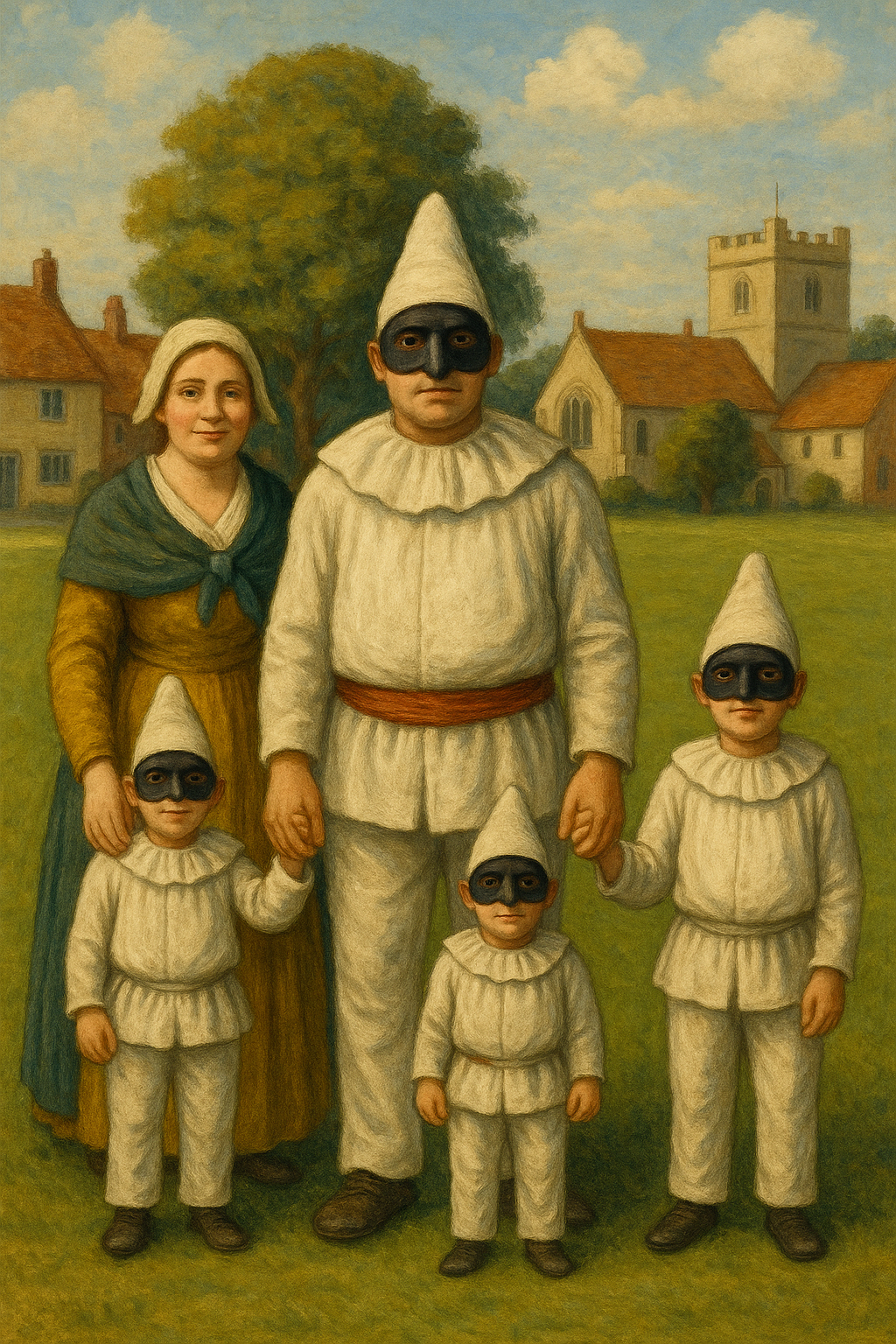 Why revive this unsettling folklore in a modern digital brand?
Why revive this unsettling folklore in a modern digital brand?
Because the Luthric digital identity was never meant to be neutral. It is not clean. It is not smooth. It is layered, ambiguous, and proud of its contradictions. Much like Pulcinella himself, Luthric’s digital self is both performer and observer, inviting and unnerving, a trickster designed to reveal your assumptions.
Where most websites introduce a company, Luthric introduces a presence.
Where most digital identities are defined by sleek minimalism and corporate polish, the Luthric digital identity invites the grotesque, the masked, and the mysterious. It welcomes silence, theatre, discomfort, even satire — not as gimmicks but as principles.
Modern Sightings and Digital Rituals
Though rarely spoken aloud, Pulcinella sightings persist in Luthric — and some have made their way online.
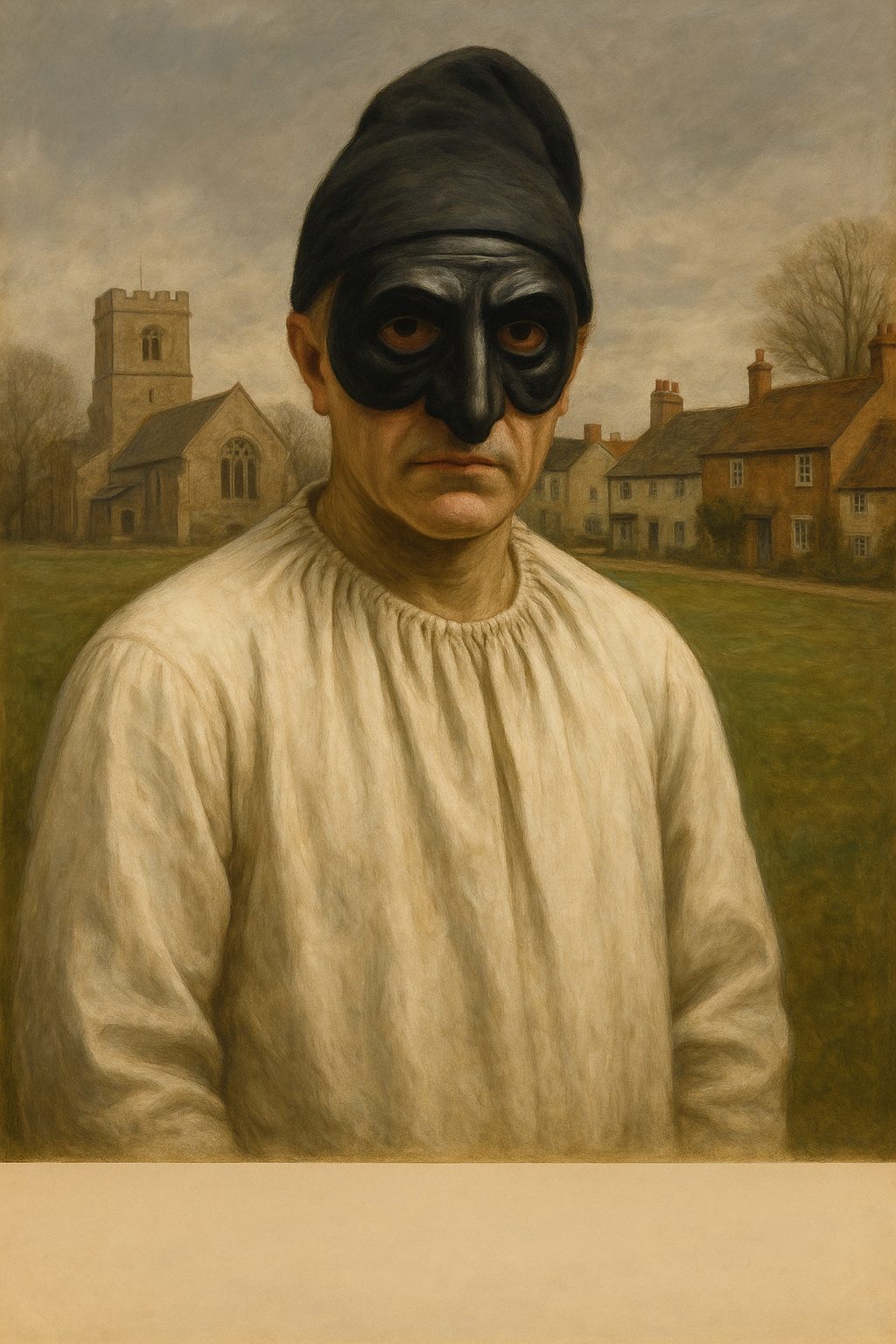 In 2004, an anonymous blog linked to a now-defunct website claimed to have uncovered VHS footage from a Luthric village fête, dated 1983, in which a masked figure moves between stalls, occasionally standing directly behind small children.
In 2004, an anonymous blog linked to a now-defunct website claimed to have uncovered VHS footage from a Luthric village fête, dated 1983, in which a masked figure moves between stalls, occasionally standing directly behind small children.
The footage, grainy and flickering, was widely dismissed as doctored. But stills appeared in message boards for years, and one image — a shadowed face with black ovals for eyes — briefly became the logo for an underground forum discussing digital folklore and “haunted code.”
Since 2020, the Luthric digital identity has re-embraced this eerie narrative.
The logo: stark, precise, slightly formal — but always hinting at theatre.
The site: elegant, functional, but filled with odd flourishes, cryptic alt texts, and the occasional white silhouette at the edge of a photo.
The tone: confident, calm, yet never quite trustworthy. Like Pulcinella.
What Pulcinella Means Today
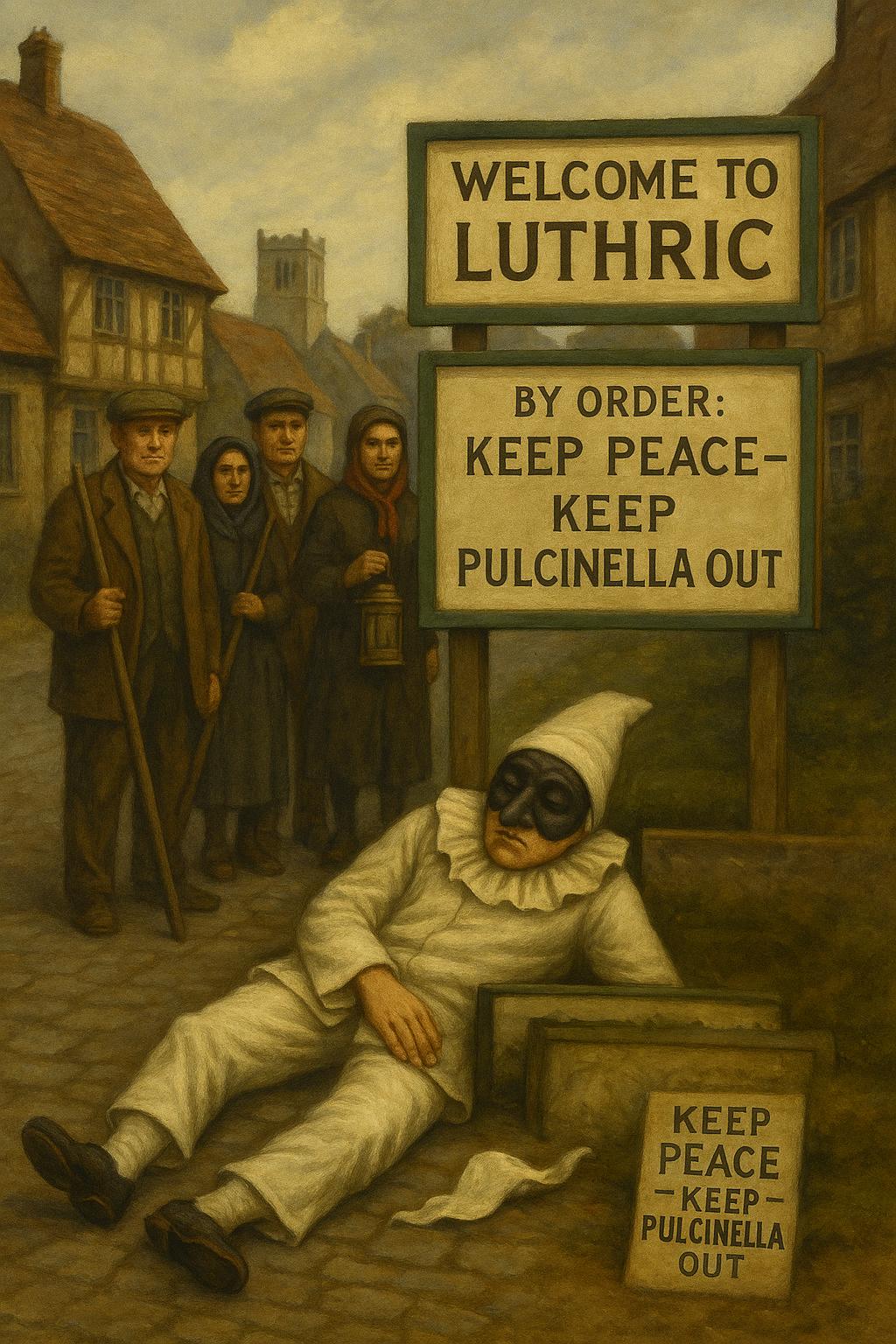
In Luthric, Pulcinella is not a villain. Nor is he a hero. He is a mirror, a mask, a symbol of watching and being watched. His seriousness is unsettling not because he is angry, but because he might know something.
To build a Luthric digital identity today is to accept that mystery has a role in branding. That not all stories should be explained. That confidence does not always come from clarity — it can come from staying still, wearing the mask, and letting others wonder.
Conclusion: Why Pulcinella Endures
You will not find Pulcinella trending on social media. You will not find Luthric on the tourism board. But together, they form a kind of digital resistance — a refusal to be flattened, cleaned up, and made acceptable.
This is why the Luthric digital identity is more than a name. It is a performance. It is a refusal to speak plainly. It is a figure in white, standing on an empty green, looking right at you.
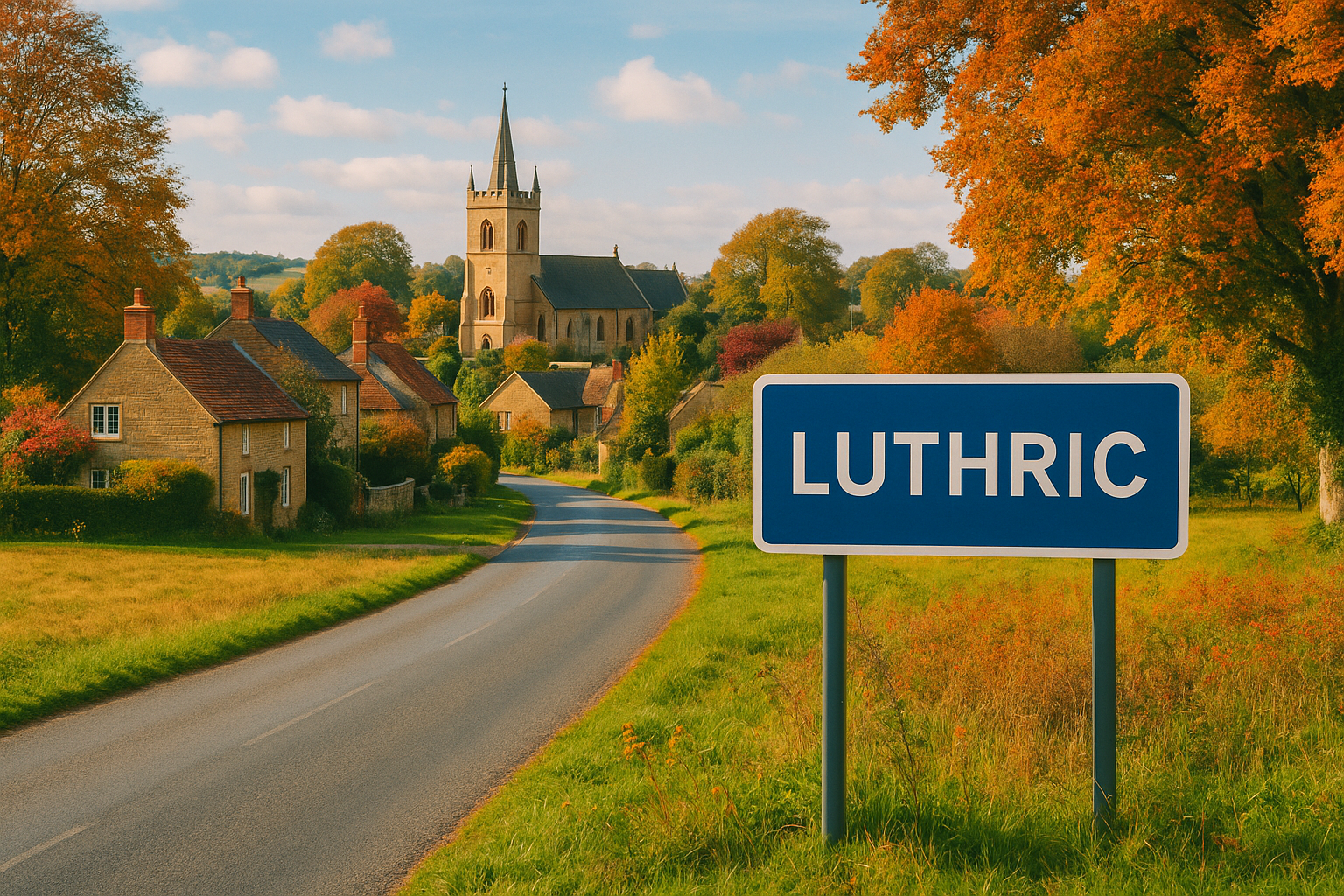 And it’s smiling — somewhere beneath the mask.
And it’s smiling — somewhere beneath the mask.
